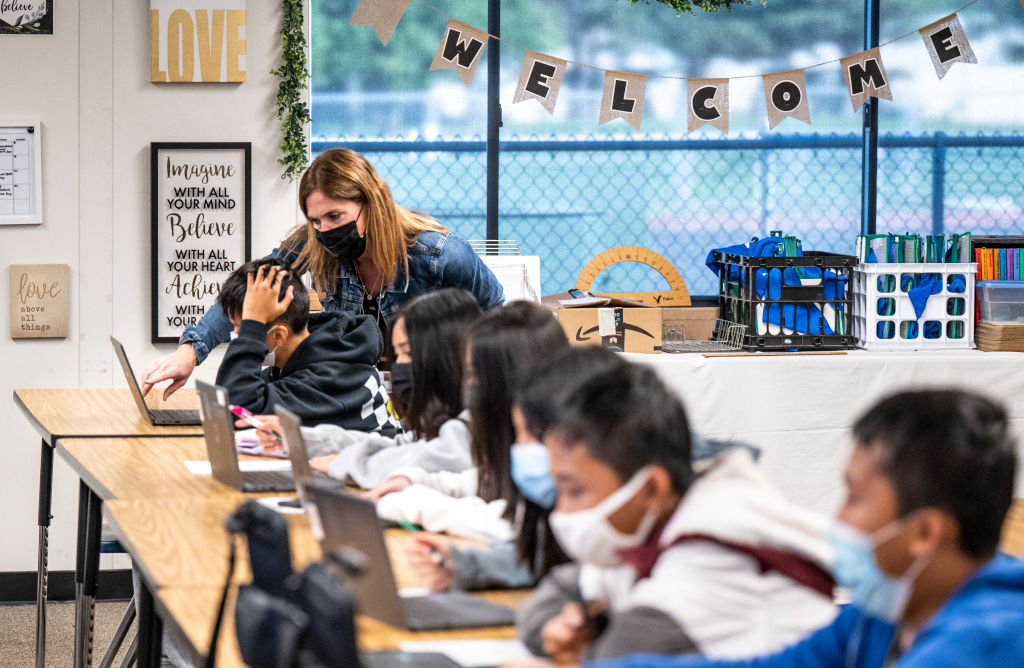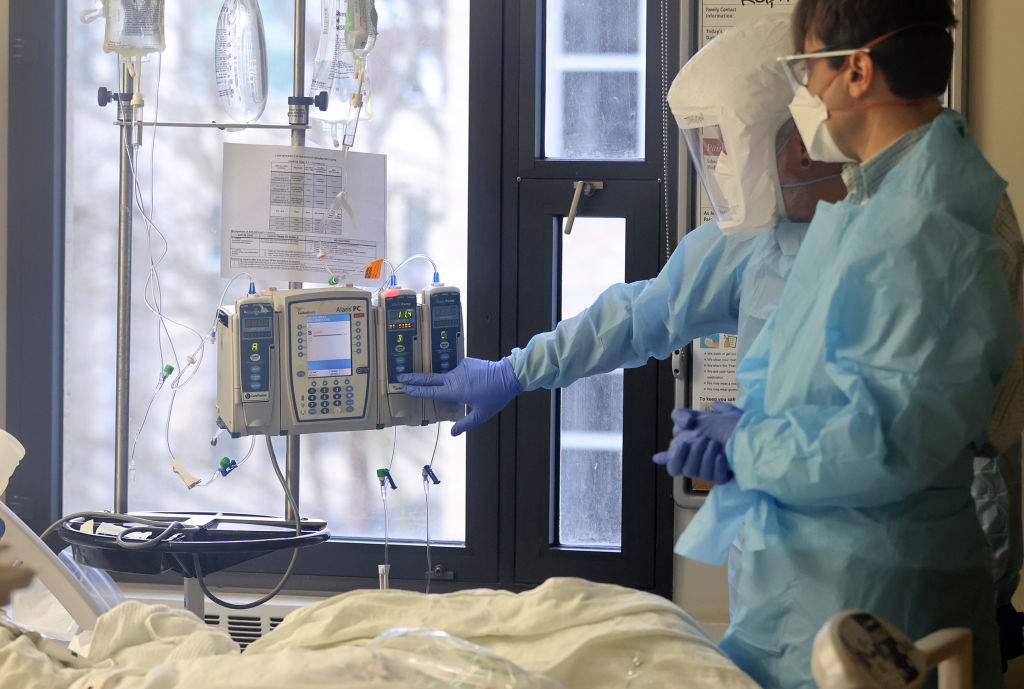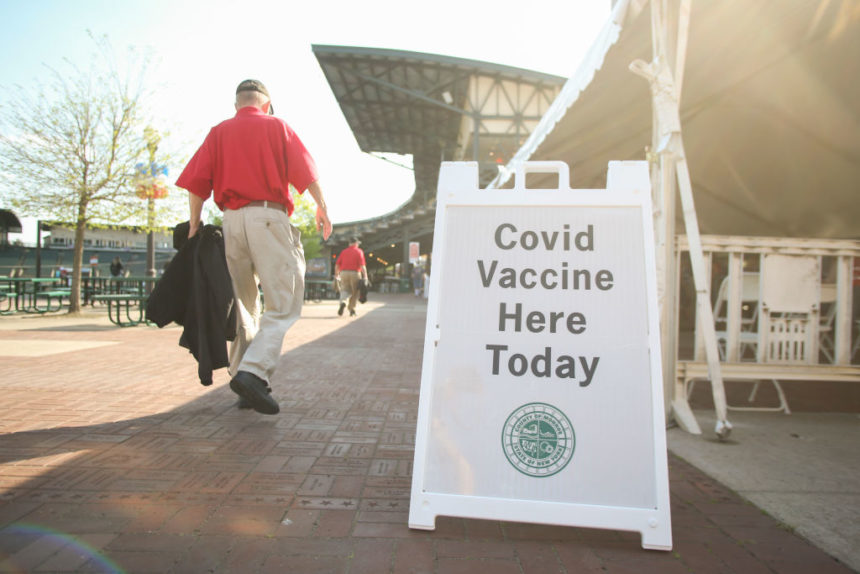Precisely two years ago, the Department of Health and Human Services declared COVID-19 a nationwide public health emergency. Since that time, the Secretaries of HHS in two quite different presidential administrations have renewed that emergency declaration every 90 days.
In case you missed it, the eighth and most recent renewal took effect on January 16. Officially, we continue in a state of emergency until mid-April, which would put us smack in the middle of the first month of baseball season… that is, if there is a baseball season.
Baseball is enduring its own state of emergency: An owner lockout that started last December, the first work stoppage on the basepaths since the players’ strike of 1994-1995. Considering the world we live in, there’s probably someone accepting wagers on which will happen first, the end of the pandemic or the beginning of baseball.
Prior to spring training, the weather report is mixed. Rays of sunshine are peeking through the clouds as COVID-19 cases and casualties ebb in some parts of the country. In other parts, the Omicron storm rages on.
How are we doing? The envelope, please:
• 251 million people—75% of the country’s population and 80% of the vaccine-eligible age 5 and older—have received at least one COVID-19 shot, including 87% of adults.
• Nearly 211 million are fully vaccinated (not including boosters), 63% of the total population and 67% of everyone 5 and older. Two out of three ain’t bad, but it won’t quite shepherd us to herd immunity.
• 85 million have had a booster or additional dose, including 43% of fully vaccinated adults. Another 86 million are booster-eligible.
When it comes to the vaccination report card, room for improvement is most notable among those of school age. As of January 19:
• Among children ages 5 to 11, 28% have received one dose and just 19% are fully vaccinated.
• For adolescents 12 to 17, it’s 65% with one dose and 54% fully vaccinated.
Here’s this week’s top 10 countdown:
10. Are we there yet? Not really.
Cheers went up from some rooting sections when the seven-day moving average of daily new COVID-19 cases dropped from nearly 800,000 on January 15 to about 692,000 on January 24. Everything is relative: A year ago at this time, the seven-day average was 165,629.
They are telling us not to look at case counts now, but instead at hospitalizations and deaths as a measure of severity. Fair enough. If we are trying to figure out where we are going, it is helpful to know where we have been.
The seven-day moving average of deaths per day was 2,166 on Monday. That’s well below 3,200 at this time a year ago, when everything bad was spiking, but well above last year’s low of 214 in early July.
Hospitalizations? New admissions of patients with confirmed COVID-19 are averaging just under 20,000 a day and ticking downward. In January of 2021, that number peaked at 16,500.
Last December, per the Centers for Disease Control and Prevention, COVID hospitalizations were nine times higher among unvaccinated adolescents than fully vaccinated ones; 12 times higher in unvaccinated young adults ages 18 to 49; and 17 times higher in unvaccinated adults 50 and up.

9. Boosters work.
• A new CDC report notes that boosters of Pfizer/BioNTech and Moderna reduced COVID-19 hospitalizations by 94% during the period of Delta dominance and by 90% during Omicron. The vaccines also reduced emergency department and urgent care visits by 94% (Delta) and 82% (Omicron). The study gathered data from late August to early January in 10 states and analyzed nearly 88,000 hospitalizations and 222,000 emergency or urgent care visits.
• Pressure is growing on nursing homes to require COVID-19 boosters for residents and staff, Danielle Brown reports in McKnight’s Long-Term Care News. Weekly cases among staff hit a pandemic high of 57,000 during the week of January 9, nearly double the previous record, while cases among residents ballooned from 5,800 per week in mid-December to 33,400 by January 2.
• Another CDC report, based on data from New York and California, found that both vaccination and prior COVID-19 infection protected against infection and hospitalization between May and November 2021. Least protected were unvaccinated people without prior infection; greatest protection was among the previously infected, with or without vaccination. This study took place pre-Omicron and pre-boosters.
8. An eerie sense of déjà vu
• In the week ending January 9, 67 COVID-related deaths occurred among nursing home staff in the U.S., nearly matching the record high of 69 set in July 2020. That was six months before vaccines became available, Amy Novotney notes in McKnight’s Long-Term Care News.
• California, Connecticut, Maryland and New York, among other states, are requiring nursing home visitors to show proof of COVID-19 vaccination or a negative test, Novotney and Brown report in McKnight’s. Meanwhile, Medicare and Medicaid are telling facilities they need to allow visitors “at all times” and can cut off access only in “very limited and rare exceptions.”
7. Revisiting vaccine hesitancy
• Emphasizing vaccine hesitancy as the primary challenge in vaccinating Black people against COVID-19 “would be a mistake,” researchers wrote in JAMA Network Open. They describe vaccine hesitancy as “malleable, at least in the context of COVID-19,” and note that Black people may be quicker than white people to move from voicing hesitancy to embracing a belief that vaccines are safe, effective and necessary to protect themselves and the community.
• The authors also emphasize the importance of access, citing 2021 Kaiser Family Foundation surveys in which Black people were more likely than white people to worry about taking time off work to get vaccinated, having to pay for the vaccine or needing transportation to a vaccination site.

6. Time for a youth movement
• 14-year-old San Jose resident Arin Parsa founded Teens for Vaccines, believing that anyone in high school should be able to give consent for recommended immunizations. Here’s the thing: He founded the group when he was in sixth grade in 2019, pre-COVID, during a measles outbreak. With COVID, he has shifted into overdrive, on social media if not behind the wheel of a car.
• State laws and policies vary on whether minors can consent to vaccination and at what age they may do so. A COVID-19 vaccine for kids under 5 may be available within the next couple of months. Parental consent needed!
• A contingent of young people—200 U.S. athletes—will head to Beijing for the Winter Olympics in the next few weeks, all of them fully vaccinated with no exemptions requested, according to the team’s chief medical officer, Dr. Jonathan Finnoff. Without vaccination, they faced a 21-day quarantine upon arriving in China. At last summer’s Tokyo Olympics, about 100 of the 600 US athletes were not vaccinated.
5. Mandate meltdown
• After a setback from the Supreme Court, OSHA has withdrawn its proposed vaccination standard for private businesses but will explore next steps, Lois A. Bowers reports in McKnight’s Senior Living. As of mid-December, 36% of workers said their employers had a vaccination requirement.
• A U.S. judge in Texas has blocked the Biden administration’s vaccination mandate for federal workers. Under the mandate, announced last September and implemented in November, 98% of the 3.5 million federal employees are already vaccinated or have obtained an exemption.
• Non-U.S. individuals coming into this country from Canada or Mexico, whether by land or by water, and whether traveling for essential or non-essential reasons, must show proof of COVID-19 vaccination. The requirement, announced last October, went into effect on Saturday.
• About 10% of general practice teams in England remain unvaccinated, Luke Haynes reports in GP. National Health Service frontline staff have until February 3 to get their first jab and until April 1 to receive their second. The Royal College of General Practitioners is urging a delay in the deadline, fearing staff shortages.
4. We’re caught in this mask-erade
• The Supreme Court has refused to undo the federal government’s mask mandate for public travel, which remains in effect until at least March 18.
• You may have heard about the American Airlines flight, bound for London with 129 passengers last Wednesday, that turned back to Miami when a woman aboard refused to wear a mask.
• Virginia’s newly elected Governor, Glenn Youngkin, began his term with an executive order rescinding a statewide mask mandate in schools and allowing parents to opt out of any local school mask requirement. That one is headed for court. Seven school boards in Virginia, including the state’s largest in Fairfax County, are challenging the order, saying the state Constitution gives local school boards responsibility in such matters.
• A New York judge has tossed a statewide mask mandate for indoor public spaces. The mandate remains in place while that decision is appealed.
• The sign on the door of my local CVS says, “Free government-funded N95 masks coming soon.” Some 400 million N95s (filtering 95% of airborne particles) are on their way to pharmacies and community health centers.

3. The candle burns at both ends, it will not last the night
• Efforts to address burnout and other mental health and wellness issues in the healthcare workforce are getting $103 million in American Rescue Plan funds from HHS. The focus will be on providers in underserved and rural areas. Some dollars will also go to training programs for firefighters, law enforcement officers and ambulance crews.
• In McKnight’s Senior Living, Kathleen Steele Gaivin provides a link to all 45 grantees of these “resiliency” funds.
• Health workers are also facing vaccination mandates—not just the federal mandate that withstood Supreme Court scrutiny but also, in some states, requirements for boosters.
• On top of stressed hospitals and stressed frontline workers, the Red Cross has declared its first-ever national blood crisis. Krispy Kreme, which gave a free donut to anyone presenting a COVID-19 vaccination card, now offers a box of a dozen glazed to anyone donating blood or platelets before January 31.
2. Teeming with misinformation
• The anti-vax rally in the nation’s capital last weekend sent disquieting messages to vaccine advocates. “What was once an overwhelming public consensus on vaccine safety is now a new front in the nation’s culture wars,” the Washington Post reports. Joe Smyser, chief executive of The Public Good Projects, said, “Our worst worries have been manifested …this movement was allowed to get stronger and stronger with almost no pushback.”
• World Health Organization Director-General Tedros Adhanom Ghebreyesus laments that “misinformation and disinformation, often spread by a small number of people, have been a constant distraction, undermining science and trust in lifesaving health tools … misinformation which has driven vaccine hesitancy is now translating to the unvaccinated disproportionately dying.”
• According to the Center for Countering Digital Hate, the anti-vaxx industry “is worth up to $1.1 billion to Big Tech with 62 million followers across their platforms.”
1. Teaming with information
• MM+M’s Lecia Bushak, who has reported diligently on the CDC’s struggles to communicate with clarity and consistency, notes that another pandemic pivot is in the works. The Biden administration is now set to emphasize masking and testing over vaccination. “Biden and his staff think they’ve got a fixable messaging problem, but they’re fooling themselves,” said Terry Haines, founder of Pangaea Policy. “They’re afraid to regularly and constantly communicate with the public about what’s next and why.”
• Clearer communication should be atop the CDC’s list of New Year’s resolutions. In PRWeek, Aleda Stam provides a timeline of muddled messaging from late December into early January, when the agency took heat when trying to shed light on isolation and quarantine periods.
• Reflecting on her first tumultuous year as director of the CDC, Dr. Rochelle Walensky told Politico, “The CDC alone can’t fix this. Businesses have to help, the government has to help, school systems have to help. This is too big for the CDC alone.”
Parting shot
Insanity, the saying goes, “is doing the same thing over and over and expecting different results.” However, when it came to renewing the national emergency declaration eight times, the virus didn’t give us much choice.
The global state of emergency can end this year, says WHO Director-General Ghebreyesus, if we vaccinate 70% of the population of each country. He waved off any talk of an imminent pandemic endgame and said conditions remain “ideal” for more variants to emerge. In other words, Omicron is not the Omega.
“Learning to live with COVID cannot mean that we give this virus a free ride,” Ghebreyesus said. “It cannot mean that we accept almost 50,000 deaths a week, from a preventable and treatable disease.”
…and some songs
Two Out of Three Ain’t Bad, Meat Loaf
This Masquerade, George Benson
Don’t Let Me Be Misunderstood, Cyndi Lauper
In the Still of the Night, The Five Satins
Take care, stay well, be safe. See you here next week, possibly more than once, on Groundhog Day.








